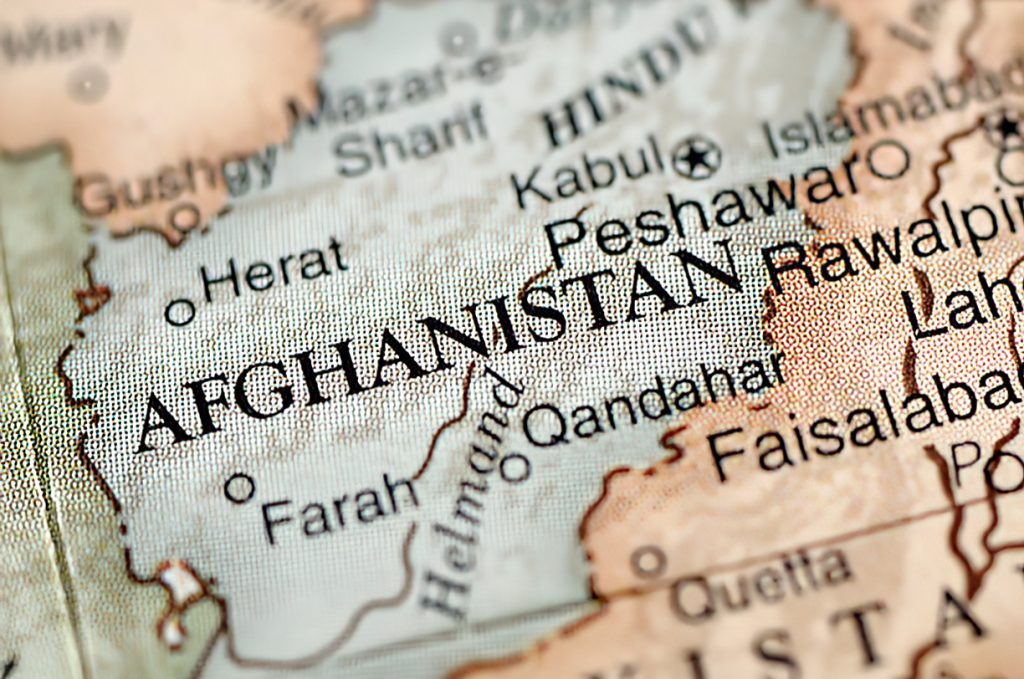Global powers to fight for rich minerals base of Afghanistan

By Eugene Gerden
Global powers may begin a fight for the development of the rich minerals base in Afghanistan in the future as the newly formed Taliban government has welcomed foreign investors to start working in the country’s exploration and mining sector.
According to various analysts’ estimates, the overall value of mineral reserves in the country is varied in the range US$1.5-2.5 trillion. And this is only a third of the Afghan territory that has been explored by the US Geological Survey. It contains iron ore, copper and gold, as well as rare earth metals as well as oil and gas fields. In addition, one of the world’s largest lithium fields, in terms of reserves, is also located in Afghanistan.
So far, only China, India and Pakistan have attempted to enter the Afghan mining sector; however, there is a possibility that the list of potential participants will be significantly expanded.
Due to the freeze of foreign financial support, which was equivalent to almost 40% of the Afghan GDP in 2020, the provision of the minerals’ base for foreigners could be almost the only option for the new Afghan government to attract the needed funds for further development of the country.
As the United States and some Western countries are leaving Afghanistan, a number of other countries, including China, Turkey and Russia are considering strengthening their presence in the Afghan mining sector. Some of them have seen progress in recent years, while China, for example, already controls Afghanistan’s largest copper deposit in Mes Ainak where reserves are estimated at 240 million tonnes of high-grade ore (which sometimes referred to as the largest in Eurasia).
Despite the fact that China won a US$3 billion tender for its development (for 30 years) several years ago, actual development has not yet begun. Still, there is a possibility that such a situation may change as, according to some Chinese and foreign media reports, Afghanistan and its minerals’ base is currently of interest to Chinese business.
As for India, the country is interested in the Haji-Gek iron ore deposit, characterized by large reserves and high metal content. The estimated volume of investments is about US$6 billion.
Russia might be interested in the development of oil and gas fields in Afghanistan although, according to some analysts, that could be associated with huge costs for producers as most of Afghan oil and gas reserves are located in hard-to-reach mountainous regions. In the case of oil, analysts estimate the overall Afghan reserves at some 1.9 billion barrels, and natural gas reserves at an estimated 165 million cubic meters. As for coal reserves, it has been estimated at 100-400 million tonnes, while rare earth elements (REEs) are estimated to be approximately 1.4 million tonnes.
Probably the biggest hopes could be related with the development of the Afghan lithium. According to some estimates, Afghanistan’s lithium reserves are comparable to those in Bolivia, one of the world’s largest suppliers. The local rich lithium reserves were initially discovered by Soviet geologists; however, their actual development has never materialized.
Experts, however, believe that development of Afghan’s rich lithium reserves may also be associated with serious technical and geological difficulties for producers. This is mainly due to the fact development of lithium deposits takes about 16 years on average. A competent assessment of the fields needs to be carried out. The situation is also complicated by the lack of infrastructure in Afghanistan necessary for such development. As a result, the cost of production may increase several times.
There are also gemstone deposits, including emeralds, rubies and lapis lazuli which are located in Afghanistan although their reserves are rather limited. Most gemstone deposits have been developed by artisanal mining with most of output being supplied to Pakistan.
Among other problems which may prevent the development of the Afghan minerals’ base for foreigners is a threat of possible sanctions. The US has already said it can use sanctions against the Taliban that may potentially affect companies and countries that will cooperate with the new regime.
